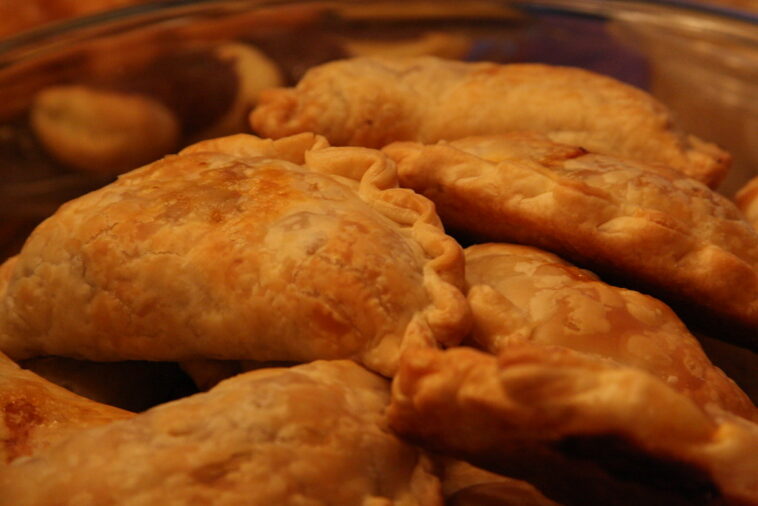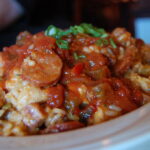Geflügelragout mit Blätterteighaube Recipe
- Introduction
- Introduce Geflügelragout mit Blätterteighaube.
- Highlight its place in European, particularly German, cuisine.
- Historical Background and Cultural Significance
- Explore the origins of poultry ragout and puff pastry in European cooking.
- Discuss the dish’s popularity and occasions it is typically served.
- Ingredient Breakdown and Roles
- Detail the ingredients needed.
- Explain the role of each ingredient in the dish.
- Detailed Step-by-Step Cooking Guide
- Provide a comprehensive guide to preparing the ragout and puff pastry lid.
- Include tips and techniques for each step.
- Nutritional Analysis
- Discuss the nutritional content of the dish.
- Offer suggestions for healthier ingredient substitutions.
- Serving and Pairing Suggestions
- Recommend side dishes and drinks that complement the ragout.
- Presentation and garnishing advice.
- Variations of the Recipe
- Explore different regional and contemporary twists on the recipe.
- Include options for dietary restrictions.
- Storage and Reheating Instructions
- Tips on how to store and reheat leftovers while maintaining quality.
- Common Mistakes and Troubleshooting
- Identify typical cooking errors and provide solutions.
- FAQ Section
- Address common questions about preparing and serving the dish.
- Conclusion
- Summarize the uniqueness and appeal of the dish.
- Encourage readers to try making it at home.
Partial Article Write-Up
Introduction
Geflügelragout mit Blätterteighaube, a classic dish in European cuisine, is a testament to the culinary art of combining simple ingredients to create something truly exquisite. Popular in German cuisine, this dish features a rich and creamy poultry ragout topped with a flaky and golden puff pastry lid, offering a delightful contrast of textures and flavors.
Historical Background and Cultural Significance
The origins of ragout, a stew-like dish, can be traced back to early European cooking traditions, where slow cooking of meat and vegetables was a common technique. The addition of a puff pastry lid adds an elegant touch, making this dish a favorite for special occasions and family gatherings. In Germany, it is often enjoyed during the colder months, providing warmth and comfort.
Ingredient Breakdown and Roles
The key to a perfect Geflügelragout mit Blätterteighaube lies in its ingredients. Typically, the ragout includes a mix of poultry (such as chicken or turkey), mushrooms, onions, and a creamy sauce made from broth, cream, and flour. The puff pastry lid, light and buttery, complements the rich and savory ragout beneath it. Each ingredient plays a crucial role in creating a harmonious and satisfying dish.
Detailed Step-by-Step Cooking Guide
The preparation of Geflügelragout mit Blätterteighaube involves several steps, each contributing to the final flavor profile. Starting with cooking the poultry and vegetables, the dish slowly transforms as the creamy sauce is added and simmered to perfection. The puff pastry lid, carefully placed on top, is then baked until it puffs up and turns a beautiful golden brown. The article would offer a detailed guide to each step, ensuring even novice cooks can achieve a delightful result.
Nutritional Analysis
While indulgent, Geflügelragout mit Blätterteighaube can be part of a balanced diet. The dish is rich in proteins and essential nutrients from the poultry and vegetables. However, it also contains fats and carbohydrates, particularly from the puff pastry and creamy sauce. Suggestions for creating a lighter version of the dish, such as using low-fat dairy products or a whole wheat puff pastry, would be included.
Serving and Pairing Suggestions
This dish is best served hot, directly after baking, to enjoy the crispiness of the puff pastry. It pairs well with simple sides like steamed vegetables or a light salad to balance the richness of the ragout. For wine enthusiasts, a medium-bodied white wine or a light red wine can complement the creamy and savory notes of the dish.
Variations of the Recipe
Geflügelragout mit Blätterteighaube is a versatile dish, allowing for various adaptations. The article would explore alternative ingredients, such as different types of mushrooms or herbs, to add unique flavors. Additionally,


